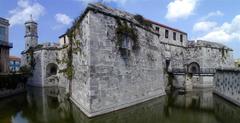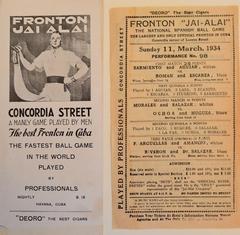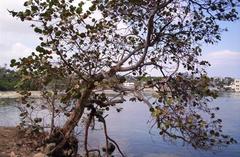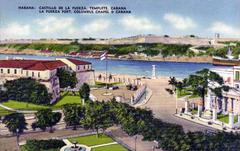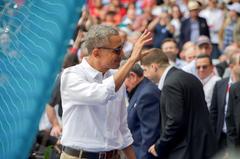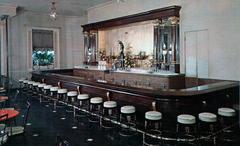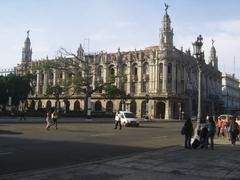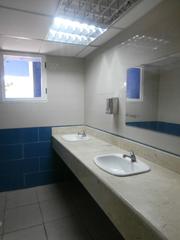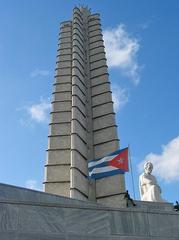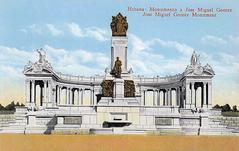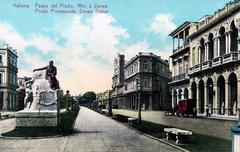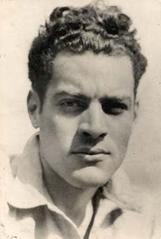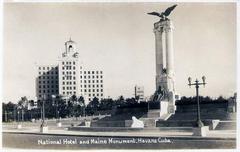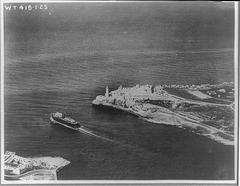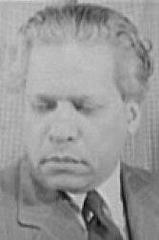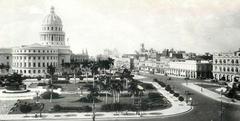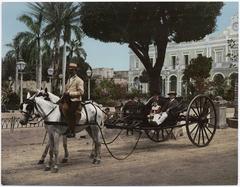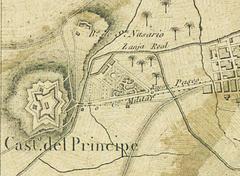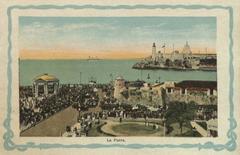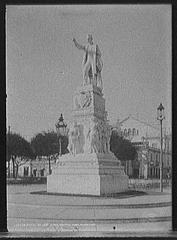Museum of the Revolution Havana: Visiting Hours, Tickets, and Historical Sites Guide
Date: 14/06/2025
Introduction
The Museum of the Revolution (Museo de la Revolución) in Havana stands as a vibrant testament to Cuba’s complex and turbulent history. Located in the heart of Old Havana within the former Presidential Palace, the museum showcases the nation’s journey from colonial rule through its wars of independence, the rise and fall of dictators, and the transformative events of the Cuban Revolution. With opulent neoclassical architecture, immersive exhibits, and iconic artifacts—including the Granma yacht—the museum is a must-see for anyone interested in Cuban culture, politics, and heritage (Hostal Balcones Muralla; Lonely Planet).
This detailed guide provides all the essential information for planning your visit: museum hours, ticketing, accessibility, highlights of the collections, and insights into the historical and architectural significance of this iconic Havana landmark.
Table of Contents
- Introduction
- Historical Evolution of the Museum of the Revolution
- Architectural Significance
- Key Exhibits and Collections
- The Granma Memorial and Outdoor Displays
- Artistic and Decorative Highlights
- Visiting Information
- Nearby Attractions and Itinerary Planning
- Frequently Asked Questions (FAQ)
- Summary and Visitor Recommendations
- Sources and Further Reading
Historical Evolution of the Museum of the Revolution
Origins as the Presidential Palace
The current home of the museum was originally built as Cuba’s Presidential Palace, inaugurated in 1920 under President Mario García Menocal. Designed by Cuban architect Carlos Maruri and Belgian architect Paul Belau, the palace was the seat of Cuban executive power until 1959. Its stately neoclassical façade and lavish interiors, decorated by Tiffany Studios of New York, were intended to project national pride and modernity (Hostal Balcones Muralla; Lonely Planet).
The building witnessed historic moments, including the failed 1957 attack by revolutionary students targeting President Fulgencio Batista. Bullet holes from this attack remain visible on the grand marble staircase.
Transformation into a Museum
After the victory of the Cuban Revolution in 1959, the palace was repurposed as the Museum of the Revolution. This transformation reflected the new government’s desire to recast the building’s symbolism—from presidential power to revolutionary heritage—and to educate visitors about Cuba’s struggle for independence, sovereignty, and social justice (Hostal Balcones Muralla).
Architectural Significance
Design and Decorative Features
The palace is a striking example of early 20th-century Cuban neoclassicism, with a façade of grand columns, ornate cornices, and symmetrical design. Inside, highlights include:
- Salón de los Espejos (Hall of Mirrors): Modeled after Versailles’ Hall of Mirrors, featuring gilded mirrors, crystal chandeliers, and intricate plasterwork.
- Carrara Marble Staircase: A dramatic Italian marble staircase greets visitors.
- Salón Dorado (Golden Hall): An opulent Louis XVI-style hall used for official receptions.
- Capilla (Chapel): Adorned with a Tiffany chandelier, reflecting the palace’s luxurious details (Lonely Planet).
Symbolic Elements
The preserved bullet holes on the grand staircase serve as a vivid reminder of the violence that preceded the revolution, while the building’s conversion to a museum itself stands as a symbol of historical change and reinterpretation.
Role in Old Havana
Located within Old Havana, a UNESCO World Heritage Site, the museum is surrounded by over 900 historic buildings of various architectural styles, making it a focal point for visitors seeking to experience the city’s rich urban fabric (LAC Geographic).
Key Exhibits and Collections
Colonial Era and Independence
The chronological narrative begins on the upper floors with exhibits from the colonial period, including artifacts from indigenous cultures, the impact of Spanish colonization, and early resistance. The museum details the wars of independence against Spain and the 1898 Spanish-Cuban-American War, showcasing weapons, uniforms, documents, and memorabilia (LoveCuba; Havana Guide).
Republican Period (1902–1959)
This section covers the “neo-colonial” era, marked by significant U.S. influence and political upheaval. Exhibits include presidential memorabilia and artifacts from the administrations leading up to Batista (Havana Guide).
The Cuban Revolution (1953–1959)
The heart of the museum focuses on the revolution, particularly the 26th of July Movement led by Fidel Castro. Visitors can see weapons, uniforms, and documents from the Moncada Barracks attack, the Sierra Maestra guerrilla campaign, and the ultimate overthrow of Batista. Personal items from iconic figures such as Che Guevara and Camilo Cienfuegos are also displayed (LoveCuba).
Post-Revolutionary Cuba
Ground-floor exhibits explore post-1959 Cuba, highlighting key events such as:
- Bay of Pigs Invasion (1961): Artifacts and photographs document the failed CIA-backed assault.
- Cuban Missile Crisis (1962): The engine of a downed U.S. U-2 spy plane is a centerpiece.
- Social Reforms: Displays on education, healthcare, and other revolutionary achievements (Lonely Planet).
The Granma Memorial and Outdoor Displays
The Granma Pavilion
Behind the museum is the Granma Memorial, a glass enclosure housing the yacht Granma that brought Fidel Castro and 81 revolutionaries from Mexico in 1956—an event that catalyzed the revolution’s final phase (WhichMuseum; Lonely Planet).
Military Vehicles and Artifacts
Outdoor exhibits include:
- SAU-100 Tank: Used by Fidel Castro during the Bay of Pigs invasion.
- U-2 Spy Plane Engine: From the 1962 Missile Crisis.
- Other Vehicles: Armored cars, missile launchers, and a postal van used in revolutionary actions.
These displays offer a tangible connection to key moments in Cuba’s revolutionary and Cold War history.
Artistic and Decorative Highlights
The museum is equally notable for its artistic treasures, including works by Cuban artists like Leopoldo Romañach and Armando García Menocal. Revolutionary pop art by Raúl Martínez and renowned works such as La Gitana Tropical by Victor Manuel and Tercer Mundo by Wifredo Lam are featured throughout the palace (Lonely Planet).
Visiting Information
Hours and Tickets
- Opening Hours: Tuesday–Sunday, 9:00 AM–5:00 PM. Closed Mondays and major holidays.
- Admission: Foreign visitors pay approximately 120 CUP (about $5 USD). Guided tours are available for an additional fee (WhichMuseum).
- Payment: Cash in CUP is recommended. Credit card acceptance is limited.
Accessibility
Due to the building’s historic nature, accessibility is limited. Elevators are scarce, and some areas have stairs or uneven flooring. Visitors with mobility needs should inquire in advance.
Guided Tours
Tours in Spanish and English are available for an extra fee and are highly recommended for those seeking in-depth context (WhichMuseum).
Travel Tips and Security
- Arrive early to avoid crowds and heat.
- Allocate at least 1.5–2 hours for a thorough visit.
- Flash photography is generally prohibited; always check signage.
- Large bags must be stored at the entrance.
- The museum is not fully air-conditioned; dress appropriately and bring water.
Facilities
Restrooms are available but basic; bring your own tissues and sanitizer. There is no on-site café, so plan to eat in Old Havana.
Nearby Attractions and Itinerary Planning
Located near Parque Central, the museum is within walking distance of:
- The National Capitol Building
- Havana Club Rum Museum
- Castillo de la Real Fuerza
- The Malecón and Paseo del Prado
Combine your museum visit with a walking tour of Old Havana or a classic car ride for a full day of exploration (cubasbest.com).
Frequently Asked Questions (FAQ)
Q: What are the Museum of the Revolution visiting hours?
A: Tuesday–Sunday, 9:00 AM–5:00 PM. Closed Mondays and major holidays.
Q: How much are tickets?
A: About 120 CUP for foreign visitors (approx. $5 USD); guided tours extra.
Q: Is the museum wheelchair accessible?
A: Accessibility is limited; some sections have stairs and no elevators.
Q: Can I take photos?
A: Photography is allowed in many areas but not all. No flash or tripods.
Q: Are guided tours available in English?
A: Yes, for an extra fee.
Summary and Visitor Recommendations
The Museum of the Revolution in Havana is an indispensable destination for understanding Cuba’s revolutionary past and national identity. Its extensive collections, symbolic architecture, and central location make it a highlight among Havana historical sites. To maximize your visit, arrive early, consider a guided tour, and don’t miss the Granma Memorial and outdoor military displays. Respect the museum’s cultural significance and approach the exhibits with both curiosity and critical engagement (Hostal Balcones Muralla; Lonely Planet; WhichMuseum; Havana Guide; Under30Experiences).
For up-to-date information, maps, and audio tours, download the Audiala app. Plan your trip to this iconic museum to discover the stories, artifacts, and architectural heritage that have helped define modern Cuba.
Sources and Further Reading
- Museum of the Revolution in Havana: History, Architecture, and Visitor Guide, 2025, Hostal Balcones Muralla (https://hostalbalconesmuralla.com/portfolio/revolution-museum-havana-cuba)
- Museum of the Revolution in Havana: History, Architecture, and Visitor Guide, 2025, Lonely Planet (https://www.lonelyplanet.com/cuba/havana/centro-habana/attractions/museo-de-la-revolucion/a/poi-sig/369753/1341262)
- Museum Exhibits and Collections, 2025, LoveCuba (https://www.lovecuba.com/blog/visit-havanas-museum-of-the-revolution/)
- Museum Exhibits and Collections, 2025, Havana Guide (https://havana-guide.com/visiting-the-museum-of-the-revolution-havana-cuba/)
- Museum Exhibits and Collections, 2025, WhichMuseum (https://whichmuseum.co.uk/museum/museum-of-the-revolution-havana-22064)
- Museum of the Revolution in Havana: Visiting Hours, Tickets, and Historical Insights, 2025, Under30Experiences (https://www.under30experiences.com/blog/everything-you-need-to-know-to-visit-havana-cuba)
- Museum of the Revolution Havana: Visiting Hours, Tickets & Insider Tips, 2025, Cubasbest.com (https://cubasbest.com/things-to-do-in-havana-cuba/)
- Museum of the Revolution Havana: Visiting Hours, Tickets & Insider Tips, 2025, WhichMuseum (https://whichmuseum.com/museum/museum-of-the-revolution-havana-22064)
- Museum of the Revolution Havana: Visiting Hours, Tickets & Insider Tips, 2025, Teretoadescubrirelmundo.com (https://www.teretoadescubrirelmundo.com/en/post/what-to-see-in-the-museum-of-the-cuban-revolution-in-havana)

